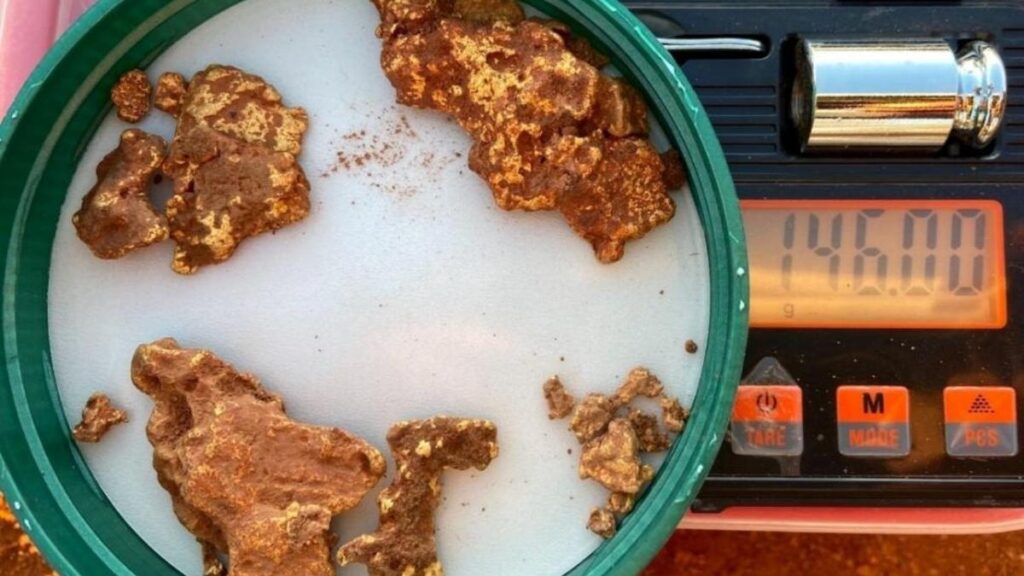Augustus Minerals’ recently received results from 1175 auger soil samples have highlighted a distinct gold anomaly at its Clifton East target near Leonora in WA over an area measuring about 1.2km x 0.6km which remains open to the west, with peak values in the range of 9.3 parts per billion gold to a maximum of 44.1ppb gold.
The high-grade core of the anomalism is wholly enclosed within a supportive halo of lower but still significant soil values ranging between 2.7-9.3ppb gold that appear to be associated with and aligned along a lithological boundary.
The samples were collected at the company’s Music Well project, about 35km north of Leonora in Western Australia’s prolifically gold productive Leonora-Laverton Greenstone Belt.
Augustus targeted the Clifton-Dodds, St Patricks, and Golden Dingo prospects within the Music Well project area, building on prior rock chip successes and eluvial gold nugget finds.
Throughout the Eastern Goldfields, thin soil cover often masks bedrock, making auger geochemistry essential and the technique has historically proven to be a highly cost-effective method for uncovering fresh targets and for providing reliable guidance to structures that control the mineralisation.
The recent program has expanded the previously known mineralisation while also probing new ground, enhancing Augustus’ grasp of the project’s gold potential.
Nearby significant gold deposits include Darlot, 12km to the north, King of the Hills, 20km west, the Leonora Camp 30km to the southwest and Thunderbox, 20km to the west.
The recently completed soil sampling program at Music Well has provided us with some critical insights into the mineralisation system at the Project.
Program highlights include the extension of the Clifton East anomaly which has been elevated by the program to the company’s top priority for maiden drilling, while other fresh undercover anomalies have been flagged for follow-up across the prospects.
Notably, soil gold results at Golden Dingo appear to mirror the presence of gold nuggets in the surface profile.
Geological insights gleaned from recent exploration have spotlighted Clifton East’s structural “jog” – an east to east-northeast fault that offsets granitoid contacts as discerned from recent magnetic geophysical data that indicates a classic dilatant zone for the passage of gold-rich fluids.
Augustus views granitoids as potential sources for the mineralisation, a view that is being increasing supported by other recent exploration that could ultimately challenge the long-held greenstone bias.
The company is targeting young, evolved intrusions like mafic sanukitoids and is employing geophysics to pinpoint the intrusive bodies which have historically been underexplored.
Its recent corporate updates have reaffirmed six key targets it says warrants further work, including its priority Clifton East, Dodd’s, St Patricks Well, Black Cat East, Teutonic East, and St Pat’s North which was acquired a year ago as a 1448 square kilometre block of fresh terrain.
Multiple high-grade outcropping veins – boasting values above 62g/t gold at the company’s Teutonic East deposit – underscore the hunt.
Possible extensions in the area of the defined projects area are often obscured with more than 70 per cent surface cover, justifying the company’s auger sampling.
Over the next three months, the company proposes securing its heritage reports, launching a Phase 2 soil sampling program and launching its first maiden drilling.
While heritage surveys have been completed for its Clifton East, Dodd’s, St Patricks, and Black Cat target areas, the company is still waiting on finalisation of the Heritage Survey report.
Beyond Music Well’s gold-copper-lithium-rare earths upside, Augustus holds 100 per cent of 1700sq km of tenement in WA’s Gascoyne region that enclose copper-gold-lithium-rare earths-uranium signals associated with the regional scale, 85km-long Ti-Tree Shear potential.
The ground also contains copper and molybdenum porphyry potential at Minnie Springs and potential for copper, nickel and platinum group elements on the Money Intrusion.
The next expected catalyst looks like it will be Augustus Minerals’ priority maiden drilling at Clifton East which could be the proof of the pudding on that underlying lithological contact at the geochemical target.
A sudden sprinkling of uniform and cohesive gold geochemistry like that doesn’t come from nowhere. It has a source and Augustus means to find it.
Is your ASX-listed company doing something interesting? Contact: matt.birney@wanews.com.au
https://thewest.com.au/business/bulls-n-bears/augustus-soil-sampling-reveals-fresh-wa-eastern-goldfields-targets-c-20729851


